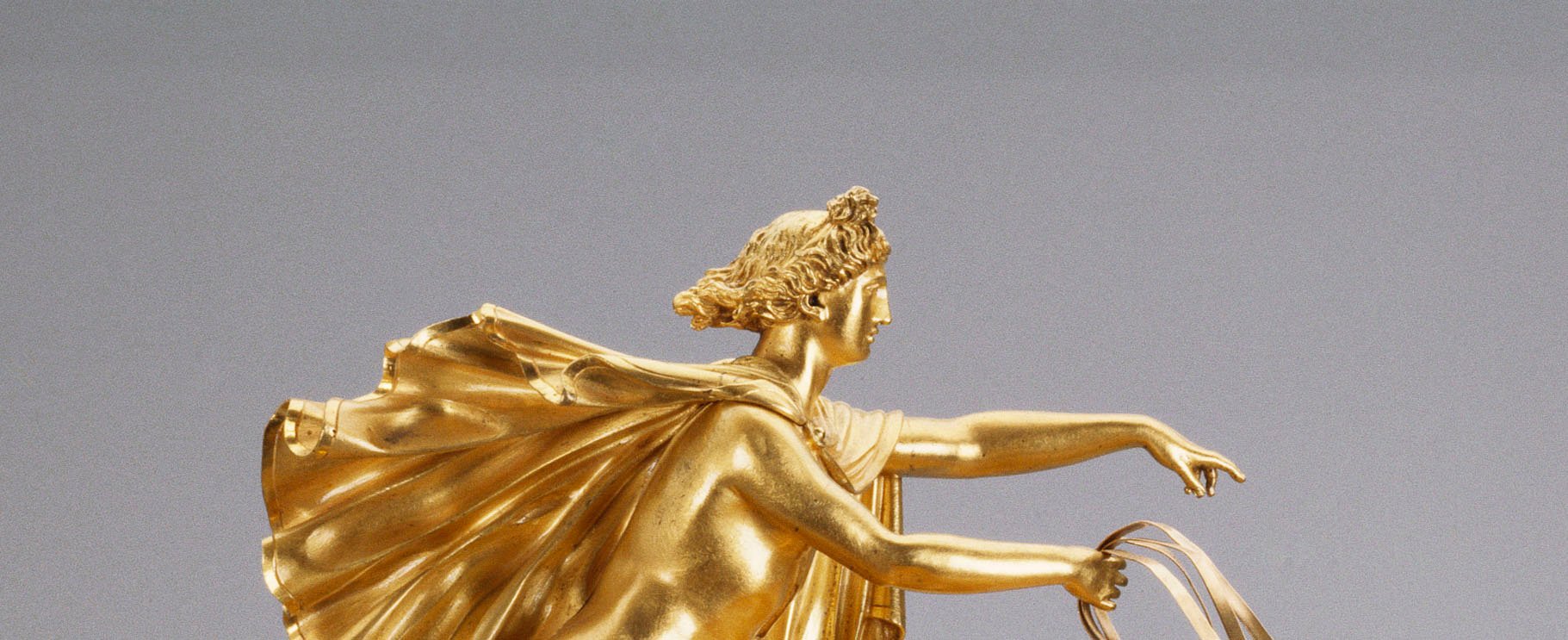
Bacchante and an African man
Cameo: late 16th/early 17th c.; Mount: late 16th/early 17th c.RCIN 65888
Obverse: bust of a bacchante, a female follower of the god of wine, Bacchus, in profile to the right, wearing a tunic with fastening on her shoulder. She has a wreath of vine leaves and her hair is knotted at the nape of her neck. A long lock of hair falls down the side of her neck.
Reverse: head of an African man, in three-quarter profile to the right, with drop-pearl earring. He has a headband, tied in a bow at the back and wears a tunic over his scaled cuirass. The surface of the stone is matt; only the pupils of the eyes have been polished. The image is cut in the dark layer, in low ‘sunken’ relief within the bevelled rim.
It has been suggested that the African man’s head is of the same period as the frame, but the female bust may be ancient with later reworking. The extremely refined workmanship of the bacchante certainly points to a master hand. The exceptional quality at this date can only point to an engraver of Milanese origin or Milanese training, perhaps one of the French engravers trained by Matteo dal Nassaro when in Paris.
Text adapted from Ancient and Modern Gems and Jewels in the Collection of Her Majesty The Queen, London, 2008







